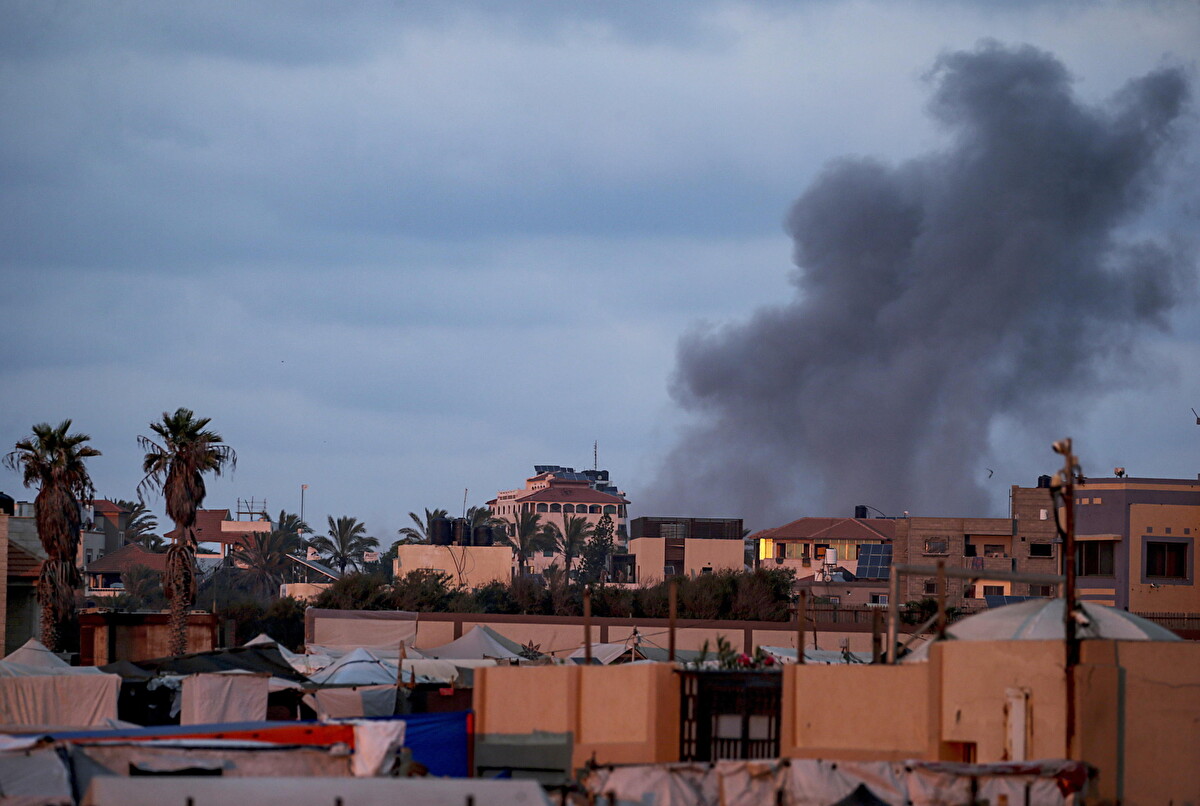Israeli airstrikes struck Hezbollah strongholds in the southern suburbs of Beirut early Sunday, sending shockwaves through the Lebanese capital. According to witnesses on the ground, explosions thundered across the city as flashes of red and white illuminated the skyline for nearly 30 minutes. The strikes, confirmed by Israel, targeted weapons storage facilities and infrastructure linked to the Iran-backed militant group.
According to the Israeli military, the operation targeted several weapons storage facilities and infrastructure linked to Hezbollah, a group Israel has long considered a major security threat. Israeli authorities emphasized that precautions had been taken to minimize civilian casualties, with advance warnings issued to the population in the area before the strikes. “The air force conducted a series of targeted strikes on a number of weapons storage facilities and terrorist infrastructure sites belonging to the Hezbollah terrorist organization in the area of Beirut,” the Israeli military confirmed.
The latest wave of strikes follows days of intense bombardment on Hezbollah-controlled areas in Beirut, including the killing of the group’s leader, Sayyed Hassan Nasrallah. Nasrallah’s death, confirmed by Hezbollah, has left a significant void in the leadership of the group, which has been a dominant force in Lebanese politics and a key ally of Iran in the region.
Lebanese security sources suggest that the Israeli strikes may have also targeted Nasrallah’s potential successor, Hashem Safieddine, who has been missing since Friday. Safieddine was reportedly near Beirut’s international airport at the time of an Israeli airstrike, which some believe may have been aimed at him. Hezbollah has remained silent on Safieddine’s fate, but his disappearance has raised concerns that the group’s leadership could be further destabilized by Israel’s ongoing campaign.

The relentless Israeli bombardment has made it difficult for rescue workers to search the rubble of buildings destroyed in the strikes, particularly in the densely populated Dahiyeh neighborhood, a Hezbollah stronghold in southern Beirut. The airstrikes have devastated much of the area, leaving large swathes of the residential zone in ruins. Lebanese officials have expressed alarm over the civilian toll, as hundreds of ordinary Lebanese have been killed, and more than 1.2 million people—nearly a quarter of the population—have been displaced from their homes.
As Israeli forces continue to push deeper into the country after months of skirmishes along the border, over the weekend, IDF airstrikes reached the northern city of Tripoli for the first time, targeting a Palestinian refugee camp. According to Lebanese security officials, one of the strikes killed a member of Hamas, his wife, and their two children. Hamas later confirmed the deaths of two of its fighters, including a senior leader, Saeed Atallah, who was killed in Tripoli.
In addition to the air campaign, Israel has launched ground operations in southern Lebanon, targeting Hezbollah positions and dismantling the group’s infrastructure along the border. Rear Admiral Daniel Hagari, an Israeli military spokesperson, stated that Israeli forces have killed 440 Hezbollah fighters and destroyed over 2,000 Hezbollah targets since the beginning of the ground offensive. However, Hezbollah has yet to release its own casualty figures.
Hezbollah has ramped up missile attacks on northern Israel as well. On Saturday, the group claimed responsibility for firing missiles at an Israeli military-industrial complex near the city of Haifa. Israel reported that two projectiles had crossed into its territory, one of which was intercepted by its defense systems. The other landed but caused no significant damage.
The conflict between Israel and Hezbollah unfolds parallel to Israel’s protracted war with Hamas in Gaza, a conflict reignited after the devastating Hamas assault on southern Israel on October 7, 2023. That attack, which claimed over 1,200 Israeli lives and resulted in around 250 hostages taken, triggered a massive Israeli military campaign. Reports from Gaza’s health ministry indicate that almost 42,000 Palestinians have died under relentless Israeli airstrikes, while the displacement of the vast majority of Gaza’s 2.3 million residents has exacerbated an already critical humanitarian crisis.
As the anniversary of the Gaza conflict looms, tens of thousands of demonstrators have gathered in cities worldwide, demanding an immediate cessation of hostilities. However, the on-the-ground reality remains deeply volatile, with both Israel and Hezbollah seemingly preparing for further escalation, their resolve unwavering in the face of external pressure.
Simultaneously, Iran, the primary backer of both Hezbollah and Hamas, has become increasingly embroiled in the mix, and earlier this week it launched nearly 200 ballistic missiles towards Israel – although with little damage. Israel has yet to retaliate against Iran directly, but the specter of strikes against Iranian oil infrastructure has already rattled global oil markets, driving up prices in anticipation of wider regional chaos.
U.S. President Joe Biden has urged Israel to consider alternative strategic approaches, especially in relation to possible operations against Iranian assets. Meanwhile, U.S. military officials are closely watching developments – and General Michael “Eric” Kurilla, the top U.S. commander in the region, has travelled to the Jewish state to actively consult with Israeli military leaders.












